The Pacific Northwest is a treasure trove of natural wonders, and its waterfalls are among the most breathtaking. From the iconic Multnomah Falls to hidden gems tucked away in lush forests, this region offers a diverse range of cascades that captivate every visitor.
Exploring these falls has been one of my most rewarding adventures. Whether you’re standing at a roadside viewpoint or embarking on a backcountry hike, each waterfall tells a unique story. The geological diversity of the area ensures that no two falls are alike.
In this list, I’ll share some of my favorite spots, along with practical tips for making the most of your visit. From trail lengths to seasonal variations, you’ll find everything you need to plan your next outdoor escape.
Table of Contents
Key Takeaways
- The Pacific Northwest is home to some of the most stunning waterfalls in the U.S.
- Waterfalls range from easily accessible viewpoints to remote backcountry hikes.
- Each waterfall offers a unique experience due to the region’s geological diversity.
- Practical details like trail lengths and seasonal tips are included for planning.
- Personal insights and photography tips enhance your visit.
Introduction to the Pacific Northwest’s Waterfall Wonders
Few places on Earth rival the natural splendor of the Pacific Northwest. Its waterfalls are a breathtaking result of volcanic geology and abundant rainfall. These cascades are not just visually stunning—they play a vital role in the region’s ecosystems.
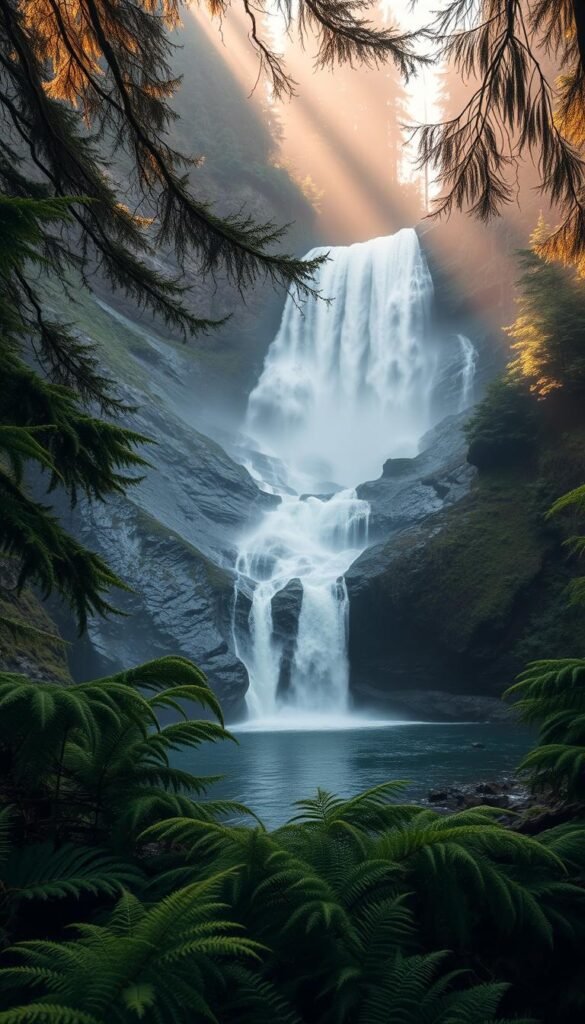
I’ll never forget the first time I stood before a waterfall in Olympic National Park. It was spring, and the snowmelt had turned the cascade into a roaring masterpiece. The sheer power and beauty left me in awe, and I knew I had to explore more.
Waterfalls here are more than just natural wonders. They feed freshwater systems that flow into the ocean, supporting diverse wildlife. Conservation efforts, like the Ocean Blue Project, work tirelessly to protect these ecosystems. It’s a reminder of how interconnected our planet is.
This article will guide you through both iconic and hidden gems. From the towering Multnomah Falls in the Columbia River Gorge to lesser-known cascades, there’s something for every adventurer. Here’s a quick look at the numbers:
| State | Number of Waterfalls |
|---|---|
| Oregon | 238 |
| Washington | 100 |
Whether you’re a seasoned hiker or a casual explorer, the Pacific Northwest offers endless opportunities to connect with nature. Let’s dive into its waterfall wonders and uncover the stories behind these cascades.
Why the Pacific Northwest is a Waterfall Lover’s Paradise
Every waterfall in this area tells a story of geology, climate, and time. The region’s volcanic basalt formations create dramatic plunges, like the columnar walls of Latourell Falls. These natural wonders are a testament to the powerful forces that shaped the landscape.
Microclimates here ensure that some falls flow year-round, while others are seasonal. This diversity means there’s always something new to discover, no matter the time of year. The lush forest surroundings add to the magic, making each visit unforgettable.
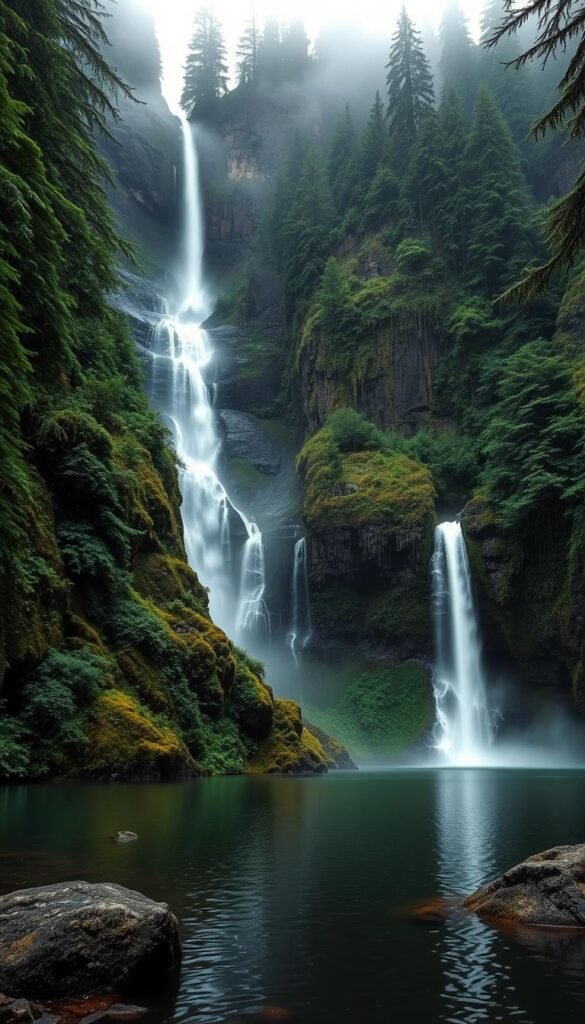
Accessibility varies widely. Some cascades require a 10-mile hike, while others, like Snoqualmie Falls, are just steps from a parking lot. This range makes it easy for everyone to enjoy these natural wonders, whether you’re a seasoned hiker or a casual explorer.
Here’s a personal tip: If you’re planning to visit Washington state parks, grab an NW Discover Pass. It’s a small investment that opens the door to over 700 miles of trails and countless waterfalls. Trust me, it’s worth it.
Even urban areas hold surprises. Take the UPS Waterfall Garden in Seattle—a serene oasis in the heart of the city. It’s proof that you don’t have to venture far to experience the beauty of cascading water.
Whether you’re chasing roaring plunges or hidden gems, the pacific northwest offers endless opportunities to connect with nature. Each waterfall is a reminder of the region’s incredible diversity and the adventures that await.
1. Multnomah Falls – Columbia River Gorge, Oregon
Standing before Multnomah Falls feels like stepping into a postcard. This iconic waterfall in the Columbia River Gorge is a must-see for any nature lover. Its two-tier drop, totaling 620 feet, is visible even from I-84, making it a landmark you can’t miss.
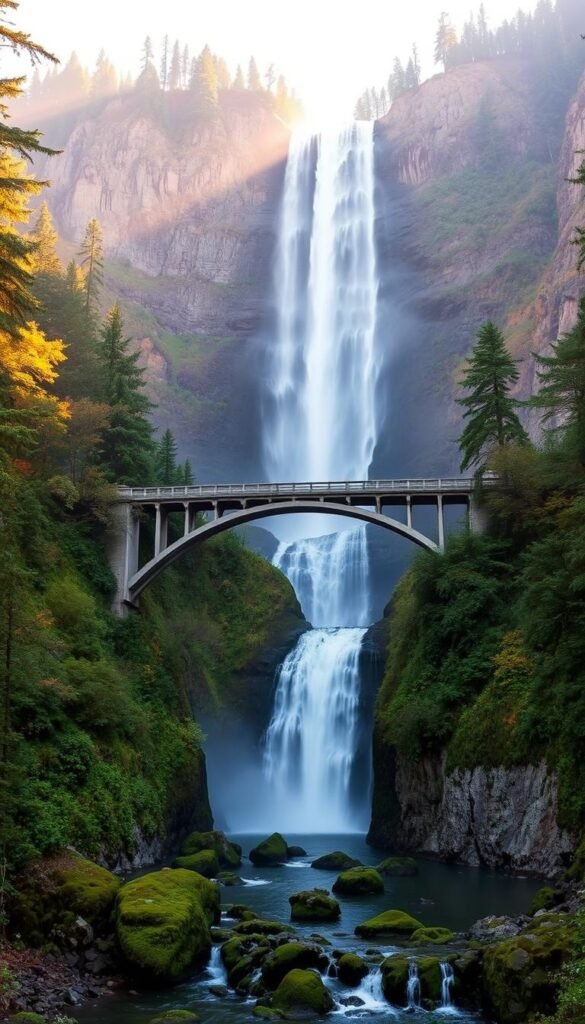
Trail Details and Difficulty Level
The trail to Multnomah Falls is a 2.4-mile round trip, offering something for everyone. The lower viewpoint is wheelchair-accessible, making it easy for all visitors to enjoy the view. For those seeking a challenge, the upper trail is steep but rewarding.
I’ll never forget the morning mist on Benson Bridge during my April visit. The air was crisp, and the sound of the cascading water was almost meditative. It’s moments like these that make the hike unforgettable.
Unique Features
Benson Bridge is a highlight of the experience. Positioned between the two tiers, it offers a stunning vantage point. The upper tier plunges dramatically, while the lower tier flows gracefully into the pool below.
Winter visits can be tricky due to ice, so check for closures before heading out. For the best experience, I recommend arriving at sunrise. The early light casts a golden glow on the waterfall, and the crowds are minimal.
| Trail Feature | Details |
|---|---|
| Total Height | 620 feet |
| Trail Length | 2.4 miles round trip |
| Accessibility | Wheelchair-friendly lower viewpoint |
| Best Time to Visit | Sunrise for fewer crowds |
Multnomah Falls is more than just a sight—it’s an experience. Whether you’re marveling at its grandeur from the base or hiking to the top, it’s a place that stays with you long after you leave.
2. Snoqualmie Falls – Snoqualmie, Washington
One of Washington’s most iconic natural attractions, Snoqualmie Falls, is a sight to behold. This 268-foot cascade is easily accessible, making it a favorite for locals and tourists alike. Over 80,000 visitors flock here annually, drawn by its sheer beauty and the soothing sound of rushing water.
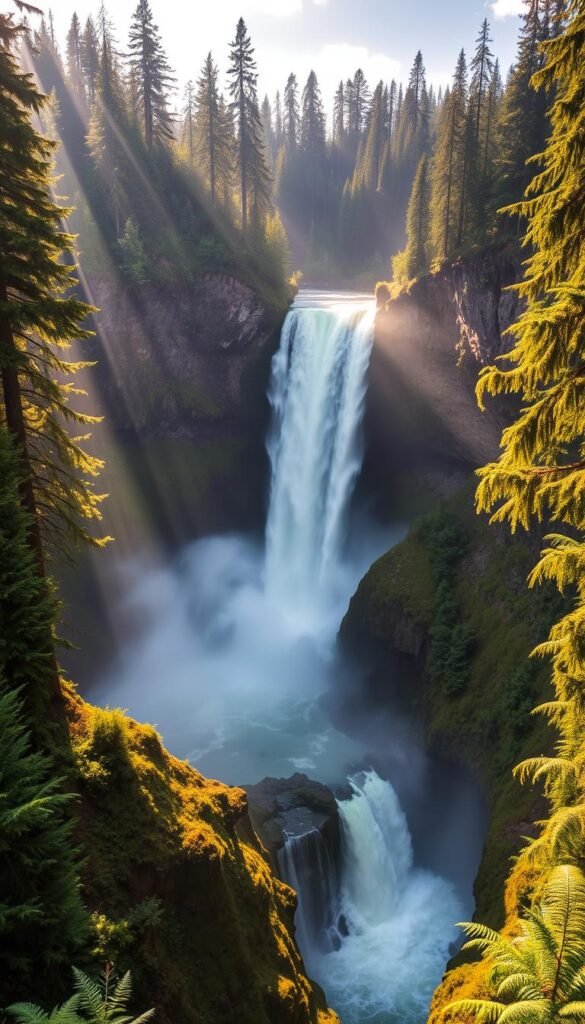
Accessibility and Viewing Platforms
What makes Snoqualmie Falls stand out is its convenience. A short 0.25-mile trail leads from the parking lot to the main viewing area. For those who prefer a more immersive experience, the riverbed trail offers a closer look at the base of the falls.
The Salish Lodge overlook provides a panoramic view, perfect for photography enthusiasts. However, weekends can get crowded, so I recommend visiting early in the morning or on weekdays for a quieter experience.
Seasonal Beauty
Each season brings a unique charm to Snoqualmie Falls. In summer, the lush greenery and misty spray create a refreshing atmosphere. Winter, on the other hand, transforms the falls into a frozen wonderland, with icy formations framing the cascade.
One of my favorite memories is visiting during a frosty December morning. The frozen mist and the sound of water echoing through the canyon felt almost magical. If you’re planning a winter trip, dress warmly and check for icy conditions on the trails.
| Feature | Details |
|---|---|
| Height | 268 feet |
| Trail Length | 0.25 miles |
| Best Time to Visit | Early morning or weekdays |
| Seasonal Highlight | Frozen mist in winter |
For an extended adventure, consider combining your visit with a hike to nearby Twin Falls. It’s a great way to experience more of the area’s natural beauty. Don’t forget to look for the historic hydroelectric plant visible from the viewing platforms—it’s a testament to the falls’ long-standing significance.
3. Marymere Falls – Olympic National Park, Washington
Nestled in Olympic National Park, Marymere Falls is a hidden gem for nature lovers. This 90-foot cascade is framed by lush ferns and surrounded by towering old-growth trees. The 1.8-mile loop trail is both accessible and rewarding, making it a favorite for families and casual hikers alike.
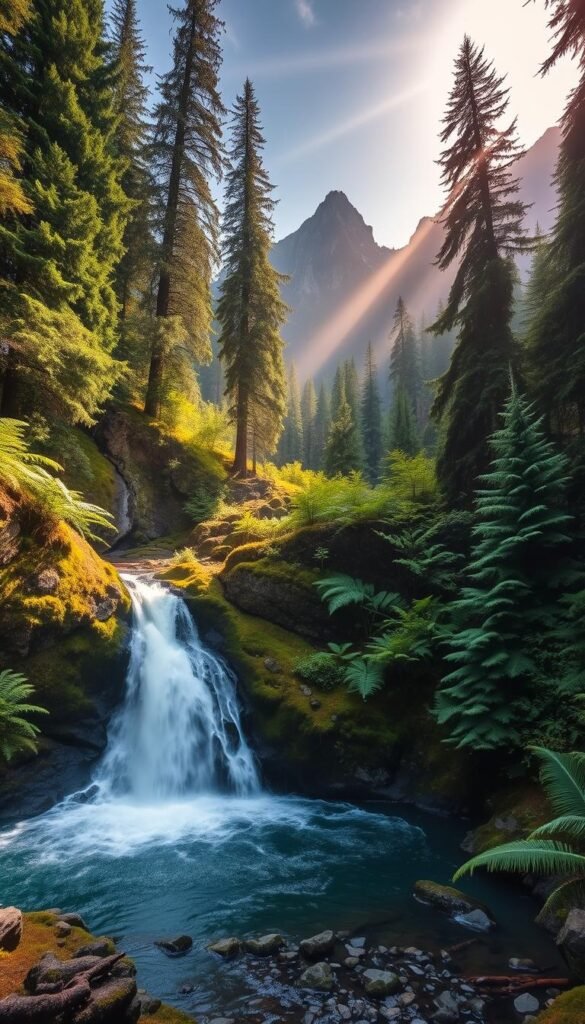
Trail Experience
The hike to Marymere Falls is a sensory delight. The scent of damp moss fills the air, and the sound of Falls Creek accompanies you along the way. Well-maintained boardwalks and root-free paths ensure a smooth journey, even for beginners. I remember spotting banana slugs on the trail—a quirky reminder of the area’s vibrant ecosystem.
For photography enthusiasts, cedar nurse logs along the trail offer unique photo opportunities. The falls themselves are a breathtaking sight, especially when the sunlight filters through the surrounding foliage. If you’re planning a visit, consider combining it with a refreshing swim at nearby Lake Crescent for a full day of adventure.
Scenic Highlights
Marymere Falls is a testament to the beauty of the Pacific Northwest. The 90-foot drop is framed by vibrant greenery, creating a picture-perfect scene. The trail’s gentle elevation gain of 298 feet makes it suitable for all skill levels, while the well-maintained pathways ensure a hassle-free experience.
| Feature | Details |
|---|---|
| Trail Length | 1.8 miles round trip |
| Elevation Gain | 298 feet |
| Difficulty | Easy |
| Best Time to Visit | Spring and summer |
For more details on the Marymere Falls hike in Olympic National, check out this guide. Whether you’re a seasoned hiker or a first-time visitor, this trail promises an unforgettable experience.
4. Toketee Falls – Umpqua National Forest, Oregon
Toketee Falls is a masterpiece of nature’s artistry. Nestled in the heart of Umpqua National Forest, this two-tier cascade plunges 113 feet into a turquoise pool. The backdrop of columnar basalt formations adds a dramatic touch, making it a photographer’s dream.
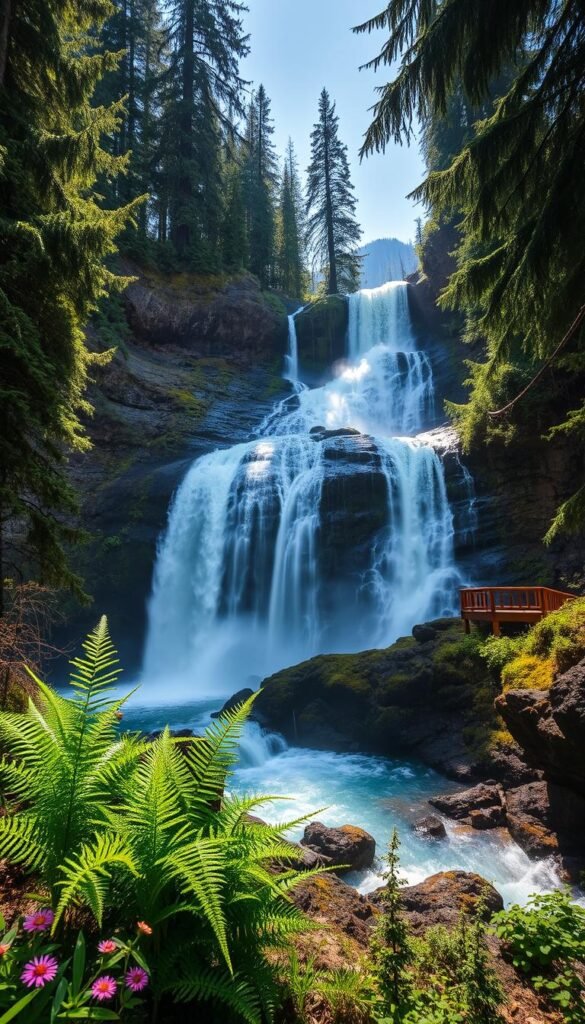
The 0.8-mile trail to the falls is short but rewarding. However, finding the trailhead can be tricky—signage isn’t always clear. Once you’re on the path, the hike is relatively easy, though the stairs can get slippery during rainy seasons. I recommend wearing water shoes for creek crossings.
Geological Wonders
What makes Toketee Falls truly unique is its volcanic origins. The columnar basalt formations resemble organ pipes, a testament to the area’s fiery past. Standing before these towering rocks, I couldn’t help but marvel at the forces that shaped them.
Trail Length and Difficulty
The hike is perfect for all skill levels. The trail is well-maintained, but the stairs near the falls require caution. During my visit, the turquoise pool’s color varied with the light, creating a mesmerizing effect. Early mornings offer the best views and fewer crowds.
- Marvel at volcanic pipe formations resembling organ pipes.
- Be cautious of slippery stairs in rainy seasons.
- Enjoy the turquoise pool’s color variations by season.
- Wear water shoes for creek crossings.
Toketee Falls is more than just a destination—it’s an experience. Whether you’re drawn by its geological wonders or the serene beauty of the forest, this cascade leaves a lasting impression.
5. Wallace Falls – Wallace Falls State Park, Washington
Wallace Falls is a stunning example of nature’s grandeur, offering a multi-tiered cascade that captivates every visitor. Located in Wallace Falls State Park, this destination combines beauty with adventure, making it a favorite for hikers and nature lovers alike.
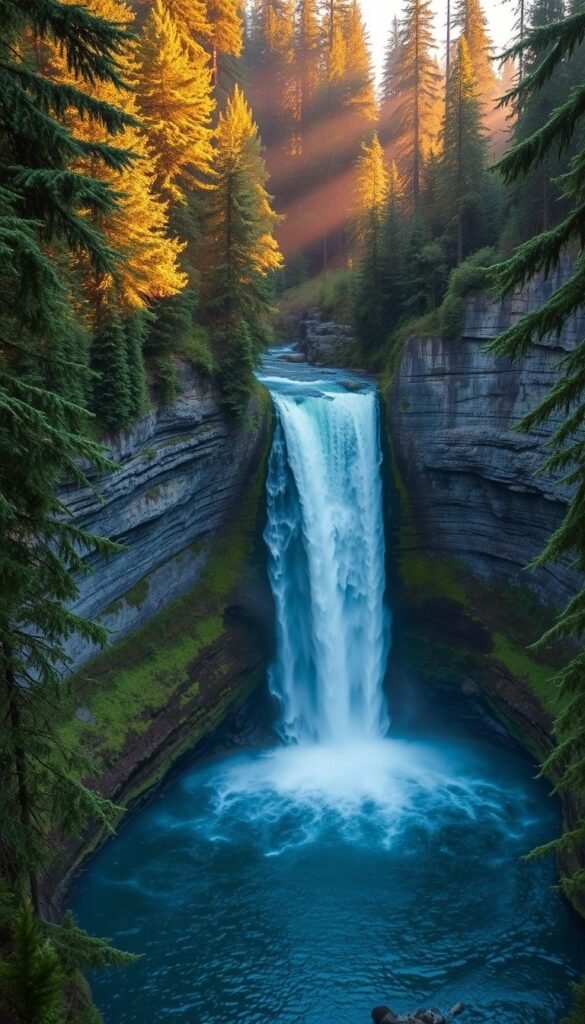
Multi-Tiered Beauty
The falls are divided into three main sections: lower, middle, and upper. The middle falls steal the show with a dramatic 265-foot curtain drop. On sunny days, rainbows often appear in the mist, adding a magical touch to the scene.
I’ll never forget the moment I spotted dippers fishing in the river below. These small, energetic birds are a testament to the area’s thriving ecosystem. Packing a lunch for a riverside picnic is a great way to soak in the surroundings.
Hiking Experience
The trail to Wallace Falls is a 6-mile round trip, offering a mix of forested paths and river views. While the hike is moderate, muddy sections can appear after rains, so sturdy footwear is essential. The trail’s well-marked routes and scenic overlooks make it accessible for most skill levels.
One of my favorite memories is reaching the upper falls and feeling the cool mist on my face. The effort is worth every step, and the views are unforgettable. Remember to bring a $10 day pass for parking—it’s a small price for such a rewarding experience.
| Feature | Details |
|---|---|
| Total Height | 265 feet (middle falls) |
| Trail Length | 6 miles round trip |
| Difficulty | Moderate |
| Best Time to Visit | Spring and summer |
6. Proxy Falls – Three Sisters Wilderness, Oregon
Proxy Falls feels like stepping into a dream, with its ethereal beauty and serene surroundings. Tucked away in the Three Sisters Wilderness, this waterfall is a hidden gem that rewards those who seek it. The lush forest and moss-covered lava flows create a mystical atmosphere, making it a favorite among photographers and nature lovers.
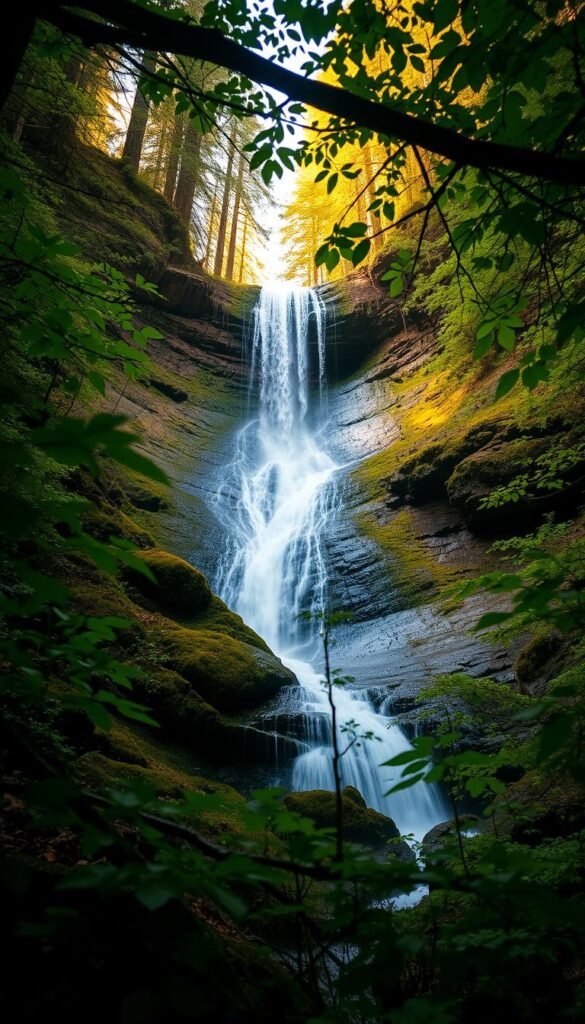
Hidden Gem
What makes Proxy Falls truly special is its secluded location. The falls cascade down a mossy cliff, creating a scene straight out of a fairy tale. Early mornings are magical here, with the mist catching the sunlight in a way that feels almost otherworldly. For the best photos, head to the south side—it offers a stunning perspective of the falls.
Accessing Proxy Falls isn’t without its challenges. The McKenzie Highway can be rough, especially in winter. But the journey is worth it. Once you arrive, the 1.6-mile loop trail is a delight, winding through old-growth trees and vibrant greenery. I remember spotting wildflowers along the path, adding bursts of color to the already breathtaking scenery.
Trail Details
The trail is relatively easy, with a gentle elevation gain of about 200 miles. It’s perfect for hikers of all skill levels, though sturdy shoes are recommended for the uneven terrain. The loop takes you to both the upper and lower falls, each offering a unique view. The lower falls are particularly striking, with the water plunging into a serene pool.
One thing to keep in mind is the delicate ecosystem. Stay on the designated trail to protect the surrounding flora and fauna. It’s a small effort that goes a long way in preserving this natural wonder for future visitors.
| Feature | Details |
|---|---|
| Trail Length | 1.6 miles loop |
| Elevation Gain | 200 feet |
| Difficulty | Easy |
| Best Time to Visit | Early morning |
For an extended adventure, consider combining your visit with a trip to the Dee Wright Observatory. The panoramic views of the Cascade Range are a perfect complement to the beauty of Proxy Falls. Whether you’re a seasoned hiker or a casual explorer, this hidden gem is a must-see. For more hidden treasures, check out this guide to the best hidden waterfalls.
7. Latourell Falls – Columbia River Gorge, Oregon
Latourell Falls offers a dramatic display of nature’s power. Its 249-foot drop is one of the most striking sights in the Columbia River Gorge. The cascade plunges straight down, framed by golden lichen patterns on the basalt cliffs. It’s a scene that feels both raw and mesmerizing.
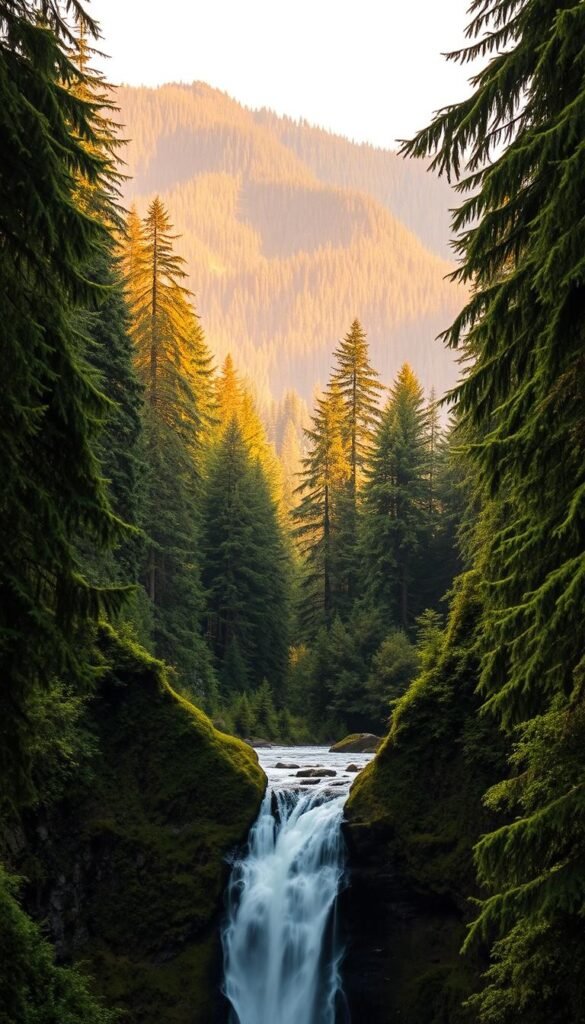
Dramatic Plunge
The sheer force of the waterfall is awe-inspiring. The water crashes into the pool below, creating a mist that cools the air. I remember standing there, feeling the ground vibrate under my feet. It’s a reminder of how powerful nature can be.
The golden lichen on the basalt cliffs adds a unique touch. It glows in the sunlight, creating a stunning contrast with the dark rock. For photographers, this is a dream come true. A long exposure shot at sunset captures the falls in all their glory.
Accessibility
The trail to Latourell Falls is a 2-mile loop, offering something for everyone. The lower falls are easily accessible from the parking lot, making it a great option for families. The upper loop, however, is steeper and more challenging.
One thing to watch out for is poison oak along the trails. I recommend wearing long pants and staying on the designated path. For the best experience, visit early in the morning to avoid crowds and catch the soft morning light.
Don’t miss the historic highway viewpoints nearby. They offer panoramic views of the gorge and are perfect for a quick stop. Whether you’re a seasoned hiker or a casual visitor, Latourell Falls is a destination that leaves a lasting impression.
| Feature | Details |
|---|---|
| Height | 249 feet |
| Trail Length | 2 miles loop |
| Difficulty | Easy to moderate |
| Best Time to Visit | Early morning |
8. Burney Falls – McArthur-Burney Falls Memorial State Park, California
Burney Falls captivates with its unique veil-like cascade, a natural wonder that feels almost surreal. Located in McArthur-Burney Falls Memorial State Park, this destination is a testament to nature’s artistry. The falls’ multiple streams create a mesmerizing “veil” effect, making it a photographer’s dream.
Natural Beauty
The water flows year-round, fed by underground springs that keep the cascade vibrant even in dry seasons. The surrounding state park adds to the charm, with towering pines and vibrant foliage. Autumn is particularly stunning, as the changing leaves frame the falls in a palette of gold and red.
Seasonal Highlights
During summer, the cool mist from the falls offers a refreshing escape from the heat. The natural pool at the base is perfect for a quick dip, though the water stays a brisk 60°F. For a quieter experience, visit on weekdays—the crowds are thinner, and the serenity is unmatched.
Don’t miss the historic hydroelectric project, over 100 years old, which adds a touch of history to the natural beauty. And for a panoramic view, head to the Pioneer Cemetery overlook. It’s a short hike with a rewarding perspective of the falls and the surrounding landscape.
- Experience the unique “veil” effect of the cascade.
- Swim in the cool, natural pool at the base.
- Visit on weekdays to avoid crowds.
- Pay the $8 vehicle fee for park access.
- Explore the Pioneer Cemetery overlook for stunning views.
Burney Falls is more than just a destination—it’s an experience that stays with you long after you leave. Whether you’re drawn by its natural beauty or its rich history, this cascade is a must-see for any nature lover.
9. Ramona Falls – Mount Hood National Forest, Oregon
Ramona Falls is a hidden treasure in Mount Hood National Forest, offering a serene escape into nature’s embrace. This 120-foot horsetail cascade is framed by a moss-covered rock face, creating a scene that feels both wild and tranquil. The 7-mile loop trail to the falls is a rewarding adventure, perfect for those seeking a mix of challenge and beauty.
Cascading Beauty
The falls fan out into smaller cascades, creating a delicate veil of water that sparkles in the sunlight. The moss-covered rocks add a touch of magic, making it a favorite spot for photographers and nature lovers alike. I’ll never forget the first time I stood before the falls—the sound of rushing water and the cool mist on my face felt like a moment frozen in time.
Hiking Experience
The hike to Ramona Falls is a 7-mile loop, offering a mix of forested paths and river crossings. The Sandy River crossing can be tricky, especially when the logs are slippery. Trekking poles are a lifesaver here, providing stability on uneven terrain. For more details on the trail, check out this guide to the Ramona Falls Trail.
Parking is available, but a higher clearance vehicle may be needed for the lot. Don’t forget to grab a recreation pass before heading out—it’s required for parking. The best time to visit is late summer or early fall, when the weather is mild and the trail conditions are ideal.
- Marvel at the 120-foot horsetail cascade.
- Be prepared for slippery river crossings.
- Use trekking poles for stability on pumice sections.
- Obtain a Wilderness Permit for parking.
- End your adventure with post-hike beers at Timberline Lodge.
Ramona Falls is more than just a destination—it’s an experience that connects you with the raw beauty of Oregon’s wilderness. Whether you’re a seasoned hiker or a casual explorer, this trail promises an unforgettable journey.
Conclusion: Plan Your Waterfall Adventure in the Pacific Northwest
Exploring the diverse cascades of the region has been a journey of awe and discovery. From the easily accessible Snoqualmie to the remote beauty of Proxy Falls, each cascade offers a unique experience. Whether you’re planning a quick trip or a multi-day adventure, this list provides a way to uncover the best of the pacific northwest.
Packing essentials like microspikes, a rain kilt, and lens cloths can make your trip smoother. Always practice Leave No Trace principles to preserve these natural wonders for future visitors. Consider taking on a waterfall passport challenge—it’s a fun way to explore more of the region’s cascades.
Seasonal visits bring their own magic. Spring offers wildflowers, while fall transforms the landscape with vibrant colors. No matter when you go, the pacific northwest promises unforgettable moments at every turn.

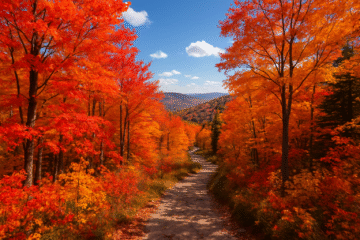
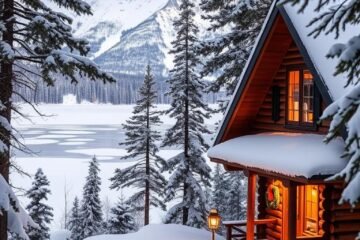
0 Comments